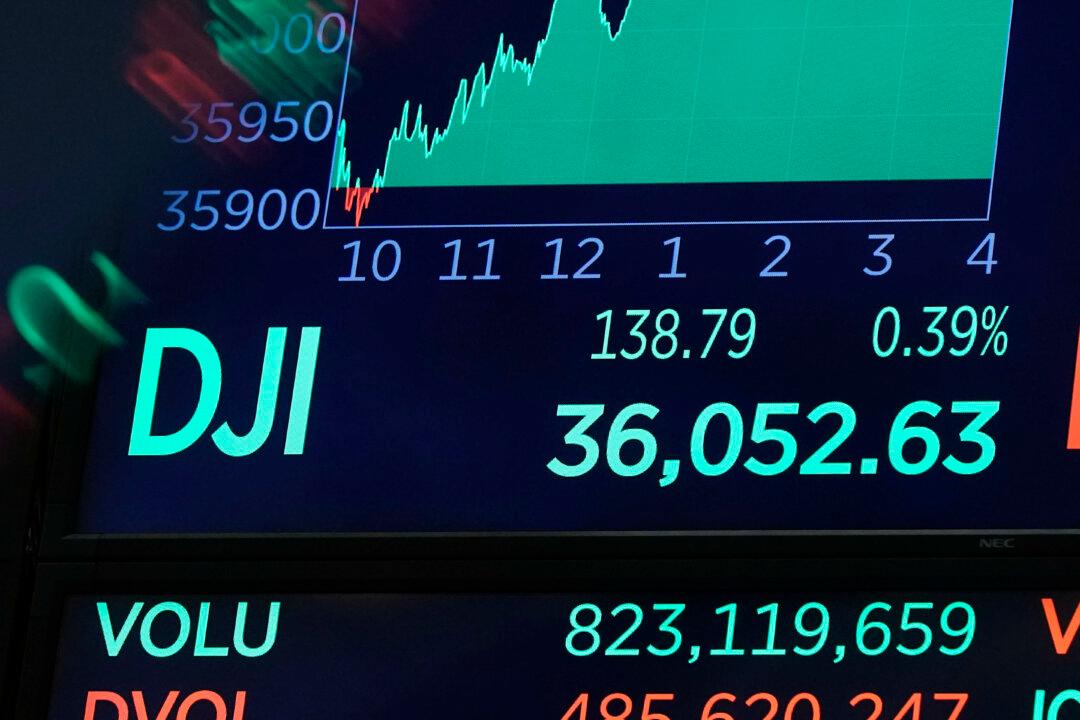The Dow Jones Industrial Average (DJIA) dropped over 1,000 points on Monday as stocks extended their three-week declines before making a same-day turnaround minutes before closing time.
At its lowest point on Monday, the market was on track for its worst day since October 2020, with the DJIA down more than 1,000 points before making an apparent recovery, closing 0.3 percent, or 99 points, higher.




